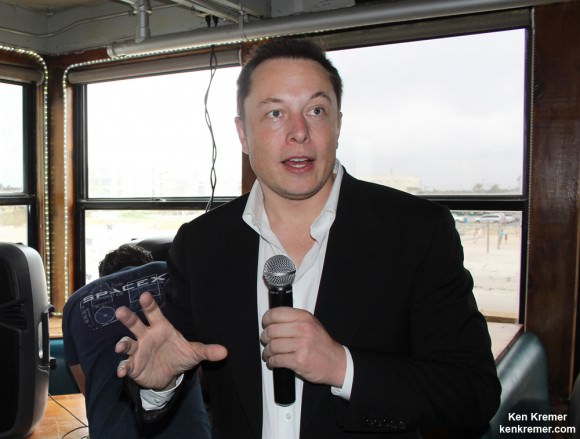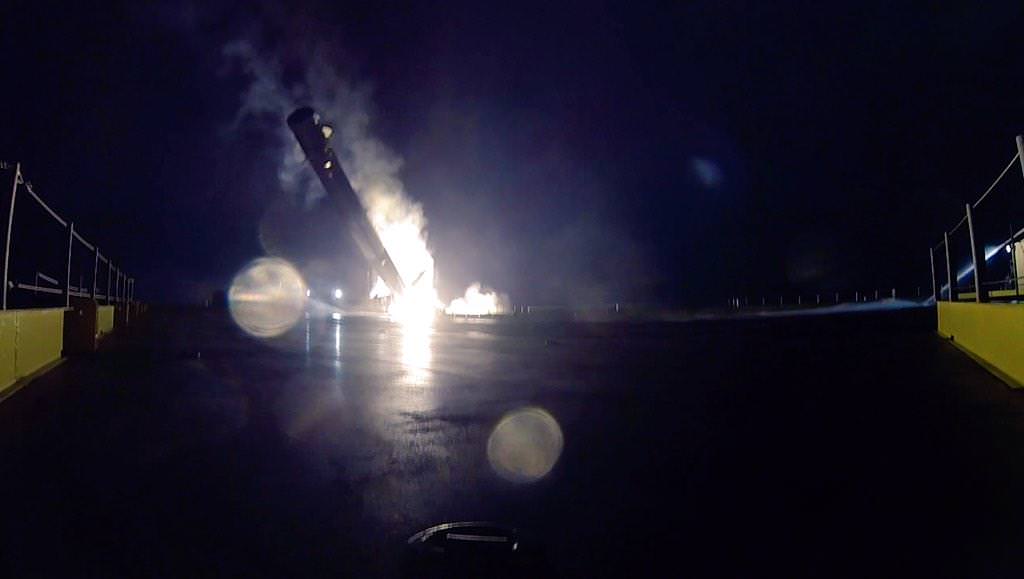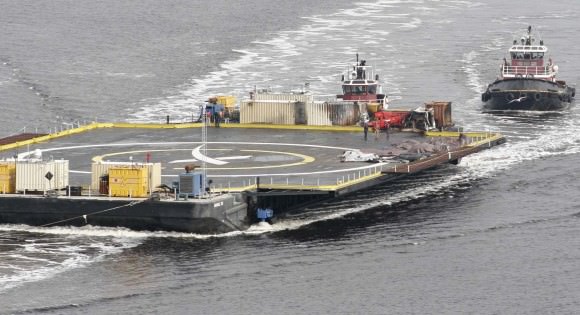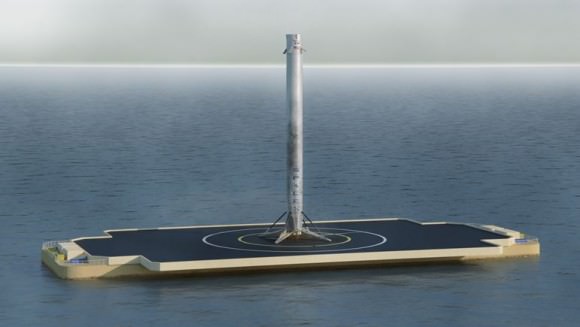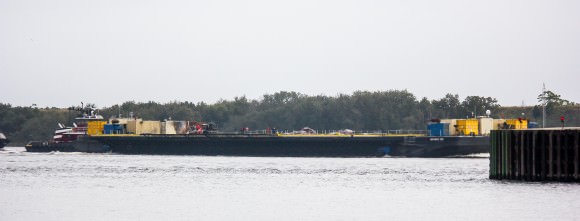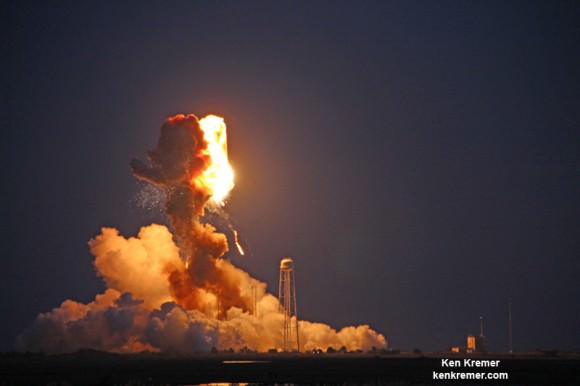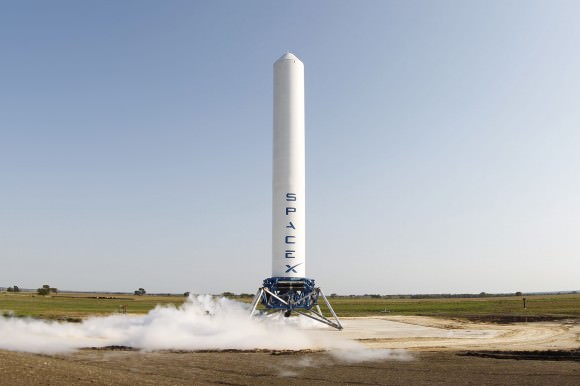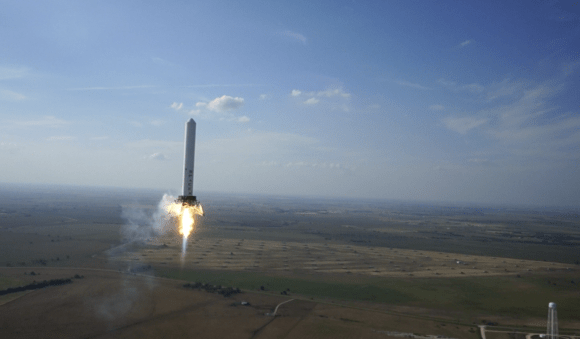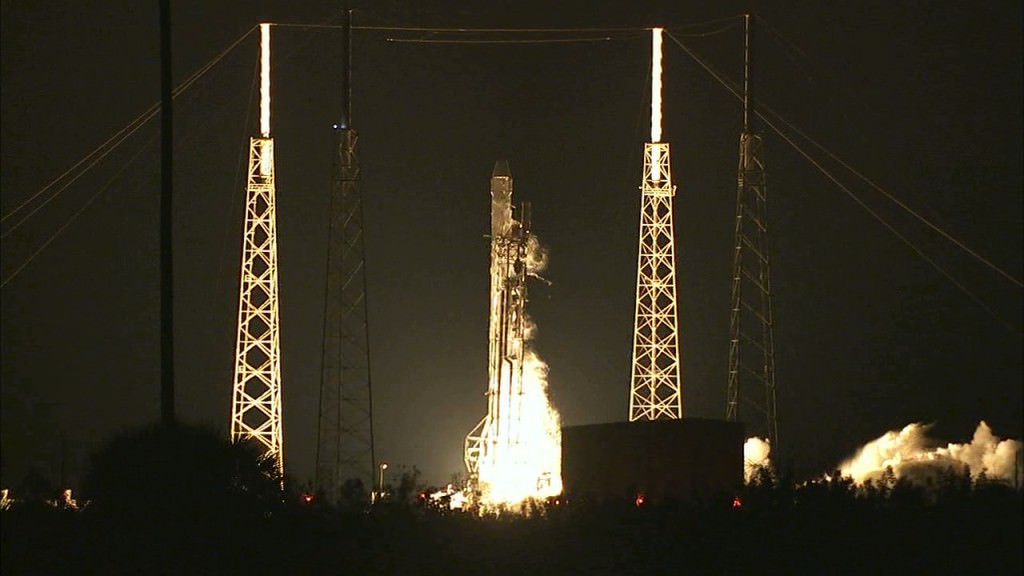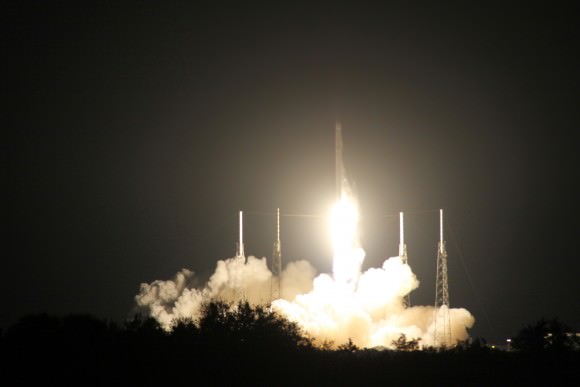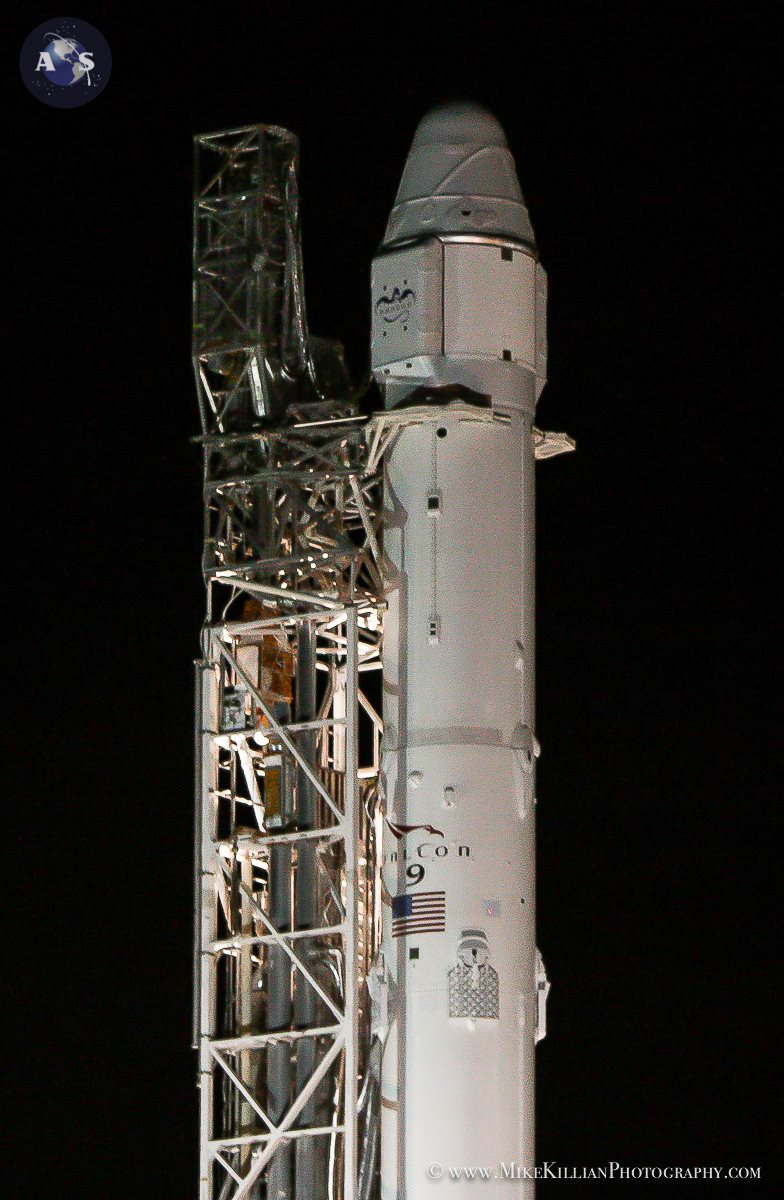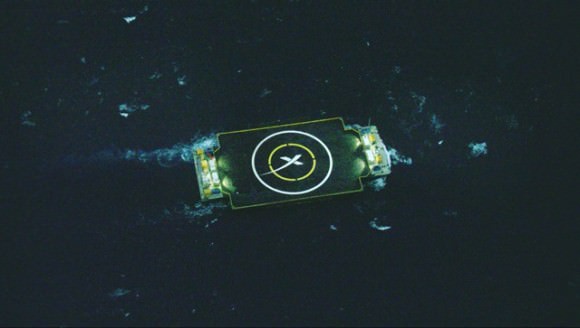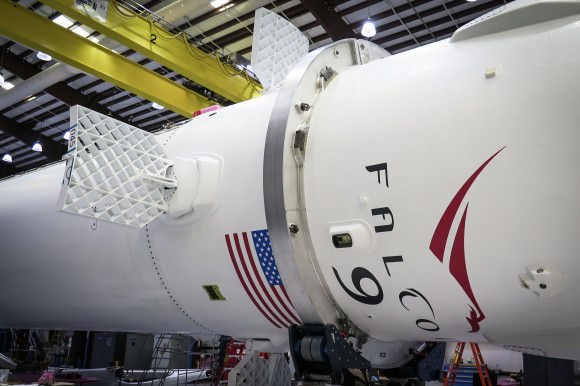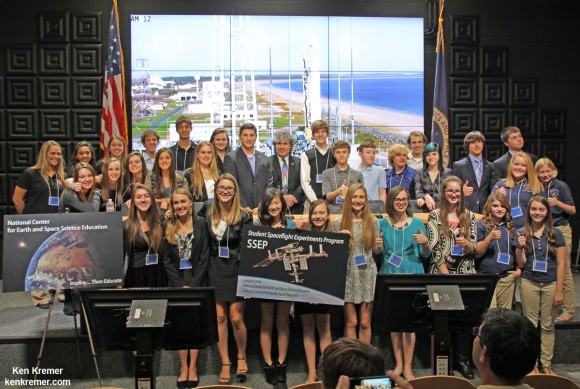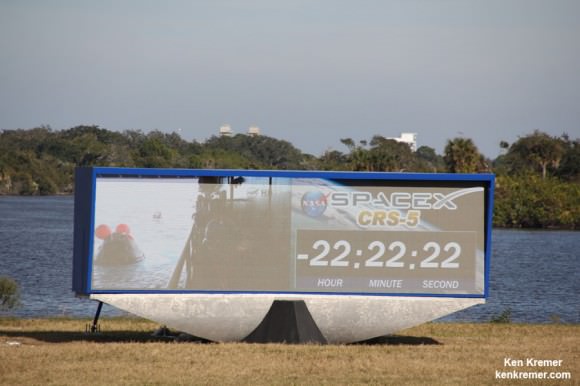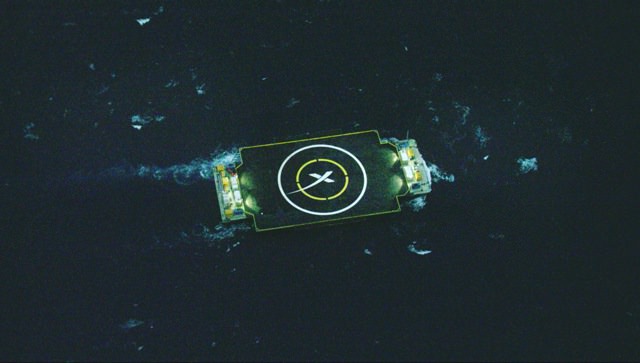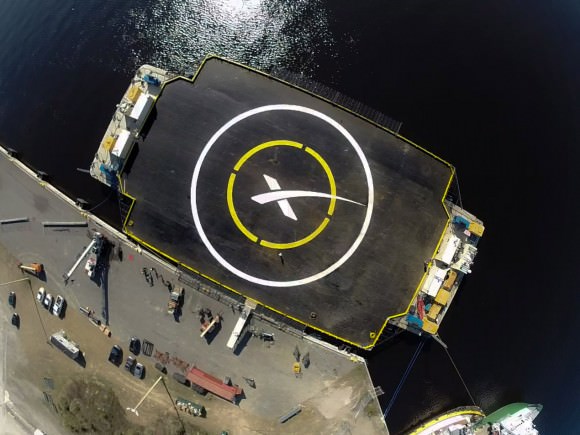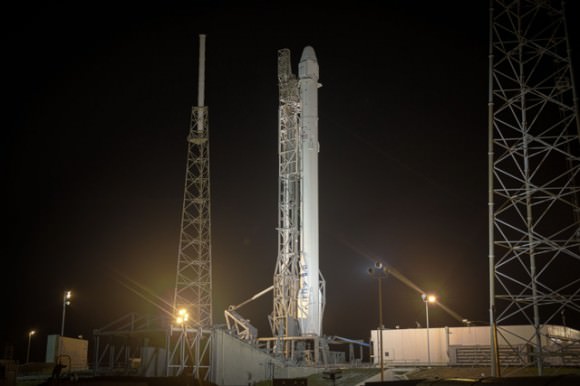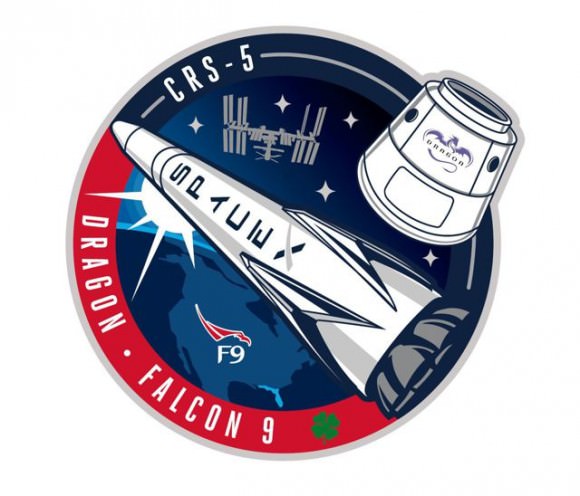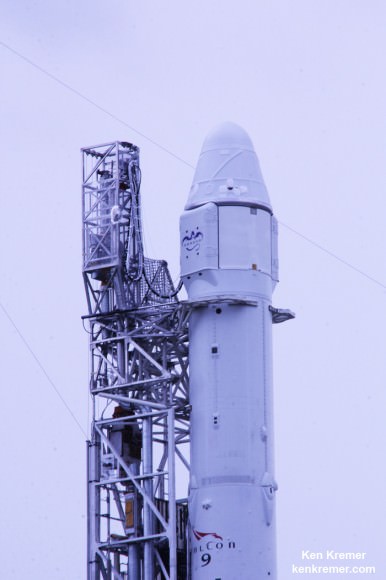Rocket hits hard at ~45 deg angle, smashing legs and engine section. Credit: SpaceX/Elon Musk
See video below[/caption]
Dramatic new photos and video of the daring and mostly successful attempt by Space X to land their Falcon 9 booster on an ocean-going “drone ship” were released this morning, Friday, Jan. 16, by SpaceX CEO and founder Elon Musk.
Musk posted the imagery online via his twitter account and they vividly show just how close his team came to achieving total success in history’s first attempt to land and recover a rocket on a tiny platform in the ocean.
Here’s the video: “Close, but no cigar. This time.”
The rocket landing and recovery attempt was a secondary objective of SpaceX, that immediately followed the spectacular nighttime blastoff of the Falcon 9 on Jan. 10 carrying the SpaceX Dragon cargo freighter spacecraft on a critical resupply mission for NASA bound for the space station.
The history making attempt at recovering the Falcon 9 first stage was a first of its kind experiment to accomplish a pinpoint soft landing of a rocket onto a miniscule platform at sea using a rocket assisted descent by the first stage Merlin engines aided by steering fins.
The first stage rocket reached an altitude of over 100 miles after firing nine Merlins as planned for nearly three minutes. It had to be slowed from traveling at a velocity of about 2,900 mph (1300 m/s). The descent maneuver has been likened to someone balancing a rubber broomstick on their hand in the middle of a fierce wind storm.
The imagery shows the last moments of the descent as the rocket hits the edge of the drone ship at a 45 degree angle with its four landing legs extended and Merlin 1D engines firing.
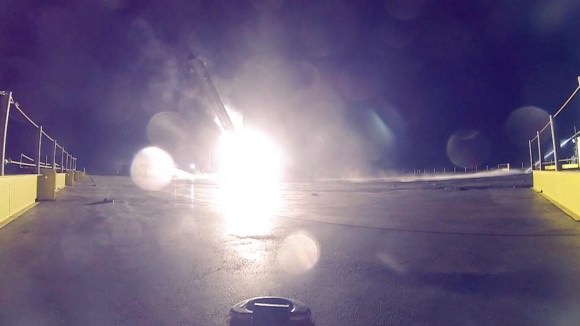
Musk tweeted that the first stage Falcon 9 booster ran out of hydraulic fluid and thus hit the barge.
“Rocket hits hard at ~45 deg angle, smashing legs and engine section,” Musk explained today.
Lacking hydraulic fluid the boosters attached steering fins lost power just before impact.
“Before impact, fins lose power and go hardover. Engines fights to restore, but …,” Musk added.
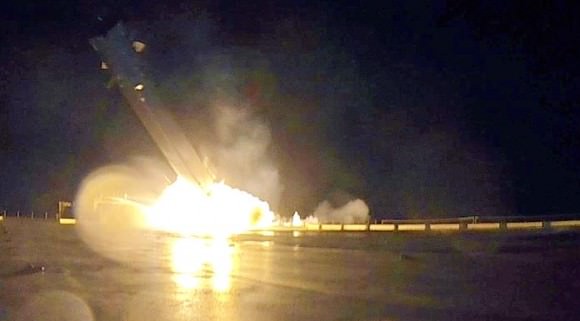
This ultimately caused the Falcon 9 to crash land as the legs and engine section were smashed and destroyed as the fuel and booster burst into flames. The ship survived no problem.
“Residual fuel and oxygen combine.”
“Full RUD (rapid unscheduled disassembly) event. Ship is fine minor repairs. Exciting day!” said Musk.
“Rocket made it to drone spaceport ship, but landed hard. Close, but no cigar this time. Bodes well for the future tho,” Musk tweeted within hours after the launch and recovery attempt.
As I wrote on launch day here at Universe Today, despite making a ‘hard landing’ on the vessel dubbed the ‘autonomous spaceport drone ship,’ the 14 story tall Falcon 9 first stage did make it to the drone ship, positioned some 200 miles offshore of the Florida-Carolina coast, northeast of the launch site in the Atlantic Ocean. The rocket broke into pieces upon hitting the barge.
Whereas virtually every other news outlet quickly declared the landing attempt a “Failure” in the headline, my assessment as a scientist and journalist was the complete opposite!!
In my opinion the experiment was “a very good first step towards the bold company goal of recovery and re-usability in the future” as I wrote in my post launch report here at Universe Today.
Listen to my live radio interview with BBC 5LIVE conducted Saturday night (Jan. 11 UK time), discussing SpaceX’s first attempt to land and return their Falcon-9 booster.
“Is it safe? Was SpaceX brave or foolhardy? Why is this significant? Will SpaceX succeed in the future?” the BBC host asked me.
I replied; “It was a 99% success” and more …..
“Am super proud of my crew for making huge strides towards reusability on this mission. You guys rock!” Musk declared in a later tweet.
SpaceX achieved virtually all of their objectives in the daunting feat except for a soft landing on the drone ship.
This was a bold experiment involving re-lighting one of the first stage Merlin 1D engines three times to act as a retro rocket to slow the stages descent and aim for the drone ship.
Four attached hypersonic grid fins and a trio of Merlin propulsive burns succeeded in slowing the booster from hypersonic velocity to subsonic and guiding it to the ship.
The drone ship measures only 300 feet by 170 feet. That’s tiny compared to the Atlantic Ocean.
The first stage was planned to make the soft landing by extending four landing legs to a width of about 70 feet to achieve an upright landing on the platform with a accuracy of 30 feet (10 meters).
No one has ever tried such a landing attempt before in the ocean says SpaceX. The company has conducted numerous successful soft landing tests on land. And several soft touchdowns on the ocean’s surface. But never before on a barge in the ocean.
So they will learn and move forward to the next experimental landing, that could come as early as a few weeks on the launch of the DSCOVR mission in late January or early February.
“Upcoming flight already has 50% more hydraulic fluid, so should have plenty of margin for landing attempt next month.”
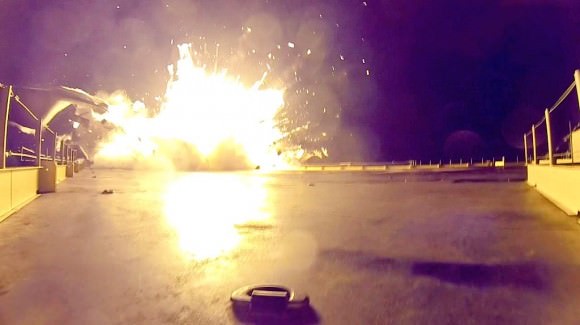
Musk’s daring vision is to recover, refurbish and reuse the first stage and dramatically reduce the high cost of access to space, by introducing airline like operational concepts.
It remains to be seen whether his vision of reusing rockets can be made economical. Most of the space shuttle systems were reused, except for the huge external fuel tanks, but it was not a cheap proposition.
But we must try to cut rocket launch costs if we hope to achieve routine and affordable access to the high frontier and expand humanity’s reach to the stars.
The Falcon 9 launch itself was a flawless success, blasting off at 4:47 a.m. EST on Jan. 10 from Space Launch Complex 40 at Cape Canaveral Air Force Station in Florida.
The Dragon CRS-5 spacecraft was loaded with over 5108 pounds (2317 kg) of scientific experiments, technology demonstrations, the CATS science payload, student research investigations, crew supplies, spare parts, food, water, clothing and assorted research gear for the six person crew serving aboard the ISS.
It successfully rendezvoused at the station on Jan. 12 after a two day orbital chase, delivering the critical cargo required to keep the station stocked and humming with science.
Stay tuned here for Ken’s continuing Earth and planetary science and human spaceflight news.
